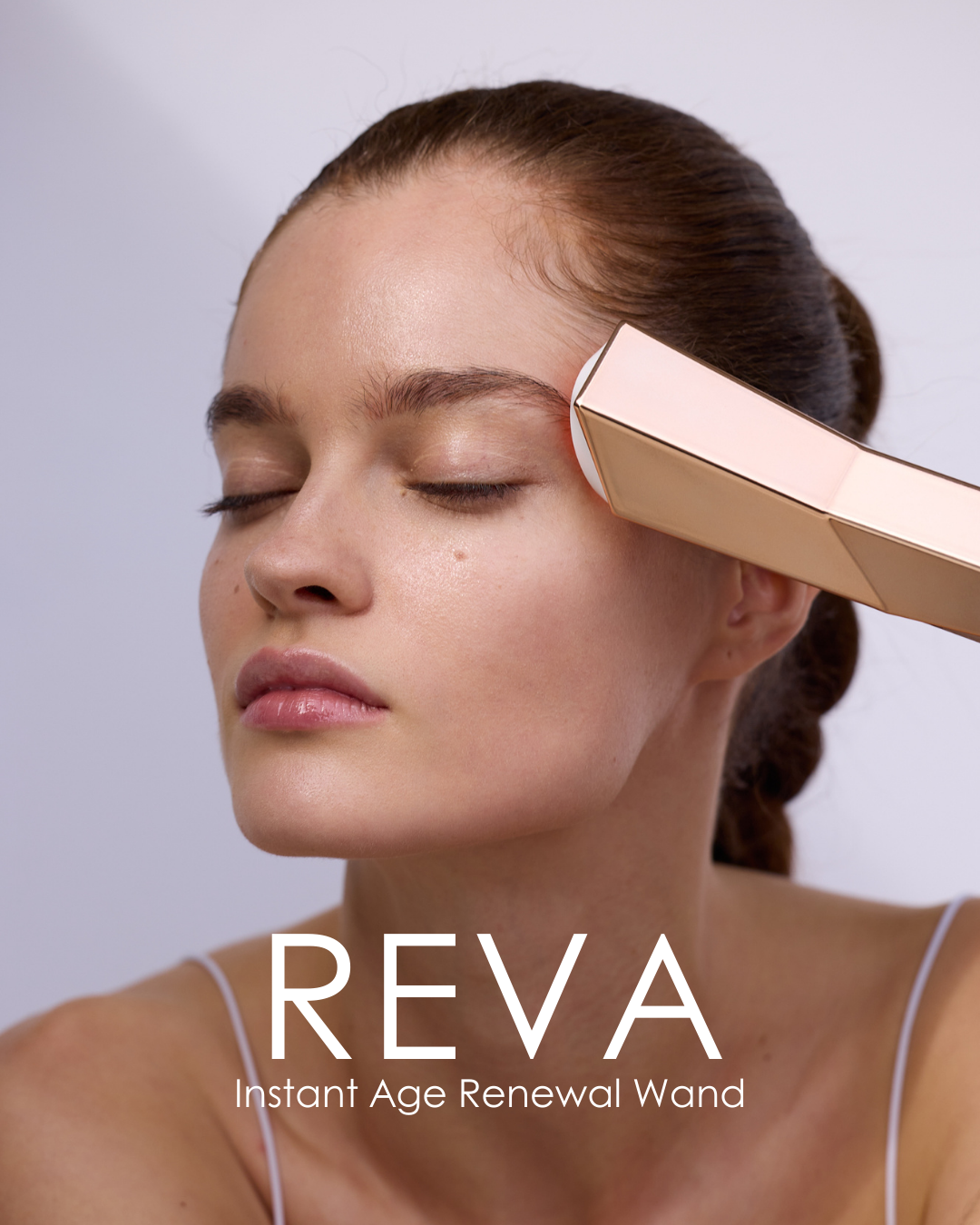
Does Blue LED Light Therapy Cause Hyperpigmentation?
IN THIS ARTICLE:
- 01 What is Blue LED Light Therapy?
- 02 What is Hyperpigmentation?
- 03 Where Does Blue Light Come From?
- 04 Can Blue Light from the Sun Cause Hyperpigmentation?
- 05 Can LED Light Therapy Cause Hyperpigmentation?
- 06 Who Should Avoid Using Blue Light Therapy?
- 07 I Suffer from Acne, But Belong to a Higher-risk Category, What Should I Do?
- 08 Your Unique Recommended Treatment
- 09 The Takeaway
From skincare influencers to A-list celebrities, LED light therapy has become the go-to treatment to enhance skin appearance but it is also a targeted treatment to improve overall skin health. However, concerns have emerged around the connection between blue LED light therapy and a heightened risk of developing hyperpigmentation. Are any of these claims true? And who needs to be most concerned about this risk?
What is Blue LED Light Therapy?
Blue LED light therapy is one of the most common types of light therapy, it is a very popular and effective treatment for managing acne, inflammation, and wound healing. This is largely due to its ability to eliminate the bacteria that causes acne from the surface of the skin.
What is Hyperpigmentation?

Hyperpigmentation is characterized by the darkening of a specific area of the skin, resulting in shades of brown, black, gray, or even reddish or pinkish tones. This darkening occurs due to an excess of melanin, a natural pigment present in the skin.
Hyperpigmentation can manifest on any part of the body, not limited to the face Despite its prevalence, the underlying causes are still largely overlooked
Common causes of hyperpigmentation
- Sun damage - Excessive sun exposure triggers overproduction of melanin
- Genetics- Certain genes can contribute to increased pigmentation in specific areas of the skin
- Skin injuries - Cuts, burns, or acne can cause inflammation, stimulating excess melanin production and resulting in dark spots or patches
- Medical conditions - Disorders like Addison's Disease and thyroid issues can disrupt hormonal balance, contributing to hyperpigmentation
- Hormonal fluctuations - Pregnancy, menopause, or other hormonal changes can stimulate melanin production
- Certain medications - Some medications cause hyperpigmentation, specifically antibiotics, antimalarials, and hormonal drugs
- Melasma - Brown or gray-brown patches on the face, known as melasma, are often influenced by hormonal changes and sun exposure
- Vitamin deficiency - Insufficient intake of vitamins like C or B12 can contribute to hyperpigmentation. Maintaining a healthy diet can be a way to prevent this condition.
Where Does Blue Light Come From?
Understanding where blue light actually comes from can help us to understand the impact of blue light on the skin. Most of the blue light present on earth is emitted by the sun in the form of visible light
The sun emits three categories of light
- Visible light
- Ultraviolet light
- Infrared light
Blue light exists on the visible light spectrum, along with red, orange, yellow, green and purple. Visible light is not to be confused with ultraviolet light, a harmful light responsible for premature aging, skin cancer and the main factor contributing to hyperpigmentation.
Can Blue Light from the Sun Cause Hyperpigmentation?
Concern arises as blue light sits closer to UV light on the visible light spectrum than for example red light. Blue is therefore categorized as a 'high-energy visible light' so there are some emerging concerns that it may contribute to uneven skin tone and hyperpigmentation.
The evidence that blue light emitted from the sun may contribute to the appearance of hyperpigmentation, the risk emerges primarily in the content of melanin rich skin when exposed to excess blue light
To prevent overexposure to blue light use a sunscreen containing iron oxide.
Can LED Light Therapy Cause Hyperpigmentation?
It's unlikely.
As mentioned vast majority from blue light on earth is emitted directly by the sun with a minor amount emitted from screens, tablets and led light therapy devices.
The relevant question then becomes whether blue light emitted from screens or LED devices can be considered excess, so as to trigger the risk of developing hyperpigmentation? There is no adequate evidence at present to suggest that this is the case and would likely need to be used in large amounts for these side effects to occur
If you have acne, blue LED light therapy is a very effective acne treatment and when used as directed, there is little existing evidence to suggest that it can cause or exacerbate hyperpigmentation.
Who Should Avoid Using Blue Light Therapy?
There are individual skin types for who blue light therapy may present an increased risk factor for hyperpigmentation, however the evidence is still not clear.
- Those already suffering from hyperpigmentation such as melasma
- Individuals with melanin-rich skin (typically III or darker on the Fitzpatrick scale.)
There is still very little solid evidence to suggest that these categories will experience hyperpigmentation or aggravate existing cases – but if you do not have acne prone red, infrared, green, or yellow light therapy may be a better treatment option in any case.
I Suffer from Acne, But Belong to a Higher-risk Category, What Should I Do?
The power of blue LED lies in its ability to treat acne – this is pretty solid evidence – do not let the small risk factor associated with hyperpigmentation discourage you from trying a very effective acne management option – just tweak your routine slightly to get the most from your blue led treatment while also managing concerns around hyperpigmentation. A clinical study has demonstrated that near-infrared light usage can counteract or mitigate any potential hyperpigmentation resulting from blue light exposure so pairing infrared and/or green light with your blue light could be the option for you.
Your Unique Recommended Treatment
Do you fit in one of the 3 categories below?
- CATEGORY 1: Skin tone III or darker on the Fitzpatrick scale, no hyperpigmentation) PLUS acne: blue light therapy, infrared light therapy
- CATEGORY 2: Skin tone I or II on Fitzpatrick scale, hyperpigmentation PLUS ACNE: blue light therapy, green light therapy +apply tinted sunscreen containing iron oxide daily
- CATEGORY 3: Skin tone III or darker on the Fitzpatrick scale, hyperpigmentation PLUS acne: blue light therapy, green light therapy +apply tinted sunscreen containing iron oxide daily
*always limit to 10 minute blue light treatments 4 times per week
The Takeaway
You may have more than one skin concern that you want to treat at any one time, understanding the power of different LED light therapy treatments can help you to build a comprehensive skincare routine that best suits your skin's precious needs.
Risks around hyperpigmentation and LED blue light therapy have not been properly substantiated and harmful UV rays remain the biggest risk factor for photoaging and other skin concerns. Devising a comprehensive skincare routine that includes a combination of LED light therapy treatments paired with a high quality SPF product containing iron oxide should be a top priority.
Project E Beauty has a range of 7 color LED masks to target a wide range of skin concerns including our LightAura | LED Face Mask, LightAura Plus | LED Face & Neck Mask, and Lumamask 7 | LED Light Therapy Face Mask to help you formulate a skin routine unique to you

written by Sophie Flair














Leave a comment
This site is protected by hCaptcha and the hCaptcha Privacy Policy and Terms of Service apply.